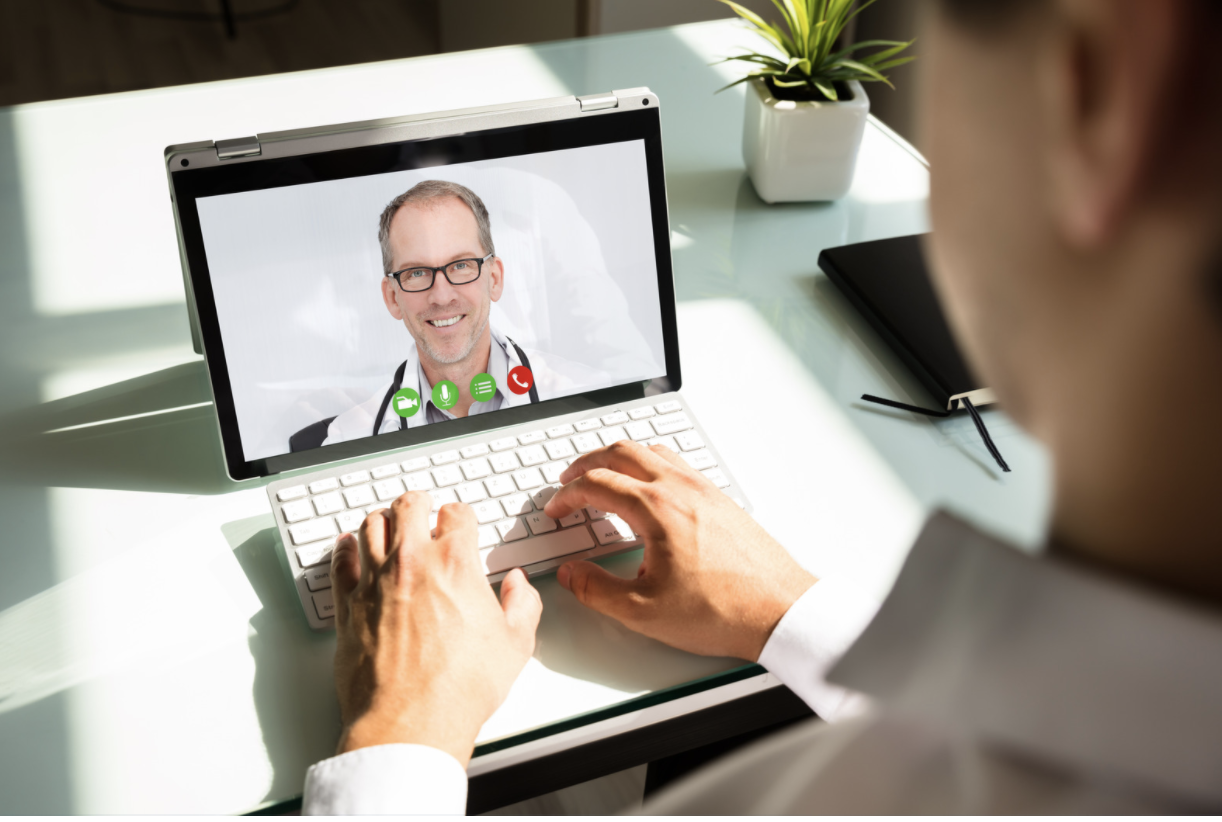Hold The Phone: What’s Your Take On Telemedicine?
August 19, 2020

According to a brand new survey from the National Poll on Healthy Aging, up until May of 2019, only 4% of adults age 50-80 had ever experienced a telemedicine visit with a health care provider. However, from the 3 months of March- June 2020, 26% of respondents had had such a visit. It’s clear that the coronavirus pandemic has pushed many of us, whether willingly or not, into the 21st-century world of virtual health visits, either by computer, tablet, smartphone, or regular telephone. And while Medicare and private insurers have, for the moment, decided to reimburse for these visits while the pandemic still poses a threat, it’s not yet clear whether such reimbursement will continue once the pandemic subsides, and it’s not clear whether patients or providers want these visits to continue. For a starting place to fully understand telemedicine for older adults, read here.
On the plus side, for patients, there is a clear benefit of convenience and access to both primary care and specialty physicians with a telemedicine visit. Particularly for patients living in rural settings or in neighborhoods with few medical resources, or for those who can’t easily take time off work to seek out care, the telemedicine visit can be a godsend. With proposed legislation sitting in Congress to make telemedicine a permanent fixture of the medical landscape, many providers and patients are fully on board with this development. However, even in the best-case scenarios, making telemedicine a permanent type of care will require significant investment in technology and training for physicians, staff, and even patients in order to fulfill the promise that it holds.
There are, however, a lot of cautionary concerns that suggest we’re a long way from telemedicine becoming a routine and regular part of most patients’ care. Especially for older adults, it’s not at all clear whether telehealth visits can replace an in-person consultation with a care provider. Many patients worry about the quality of the care and connection they have with a telemedicine visit (not to mention the lack of a physical exam). Some recent research studies published in JAMA Internal Medicine (Here and Here) suggest there are many challenges to regular telemedicine care for seniors. Using data from 2018, one study suggests that up to 41% of Medicare beneficiaries lack access to a computer with high-speed internet at home and nearly as many lack smartphones with wireless data. Further, a significant percentage may lack familiarity with the technology necessary to make telemedicine really work or because of disability, can’t easily use such technology. Moreover, there is the challenge of telemedicine “unreadiness” ie, difficulty hearing or seeing, cognitive impairment, or lack of technical savvy that suggests many older adults would be disadvantaged with a regular system of telemedicine. As one expert stated, telemedicine is “like having a clinic up a flight of stairs with no ramp or elevator.” If a provider does plan on using telemedicine for older patients, there are valuable tips on how to make it a more successful interaction (such as how best to communicate and prepare patients for the encounter).
The future of telemedicine for most patients is unclear. Already with the re-opening of medical offices, and the return of some in-person visits, there’s been a reduction in the number of telemedicine visits. While it’s clear that for some patient and provider populations telemedicine will be a feature alongside more traditional medical practices, it’s unclear whether most insurers and providers will be willing to do what it takes to make it integral and essential for medical practices going forward. If the investment in technology and support isn’t made, there’s the risk that telemedicine becomes one more way that vulnerable patient populations receive less than optimal care from our healthcare system.







